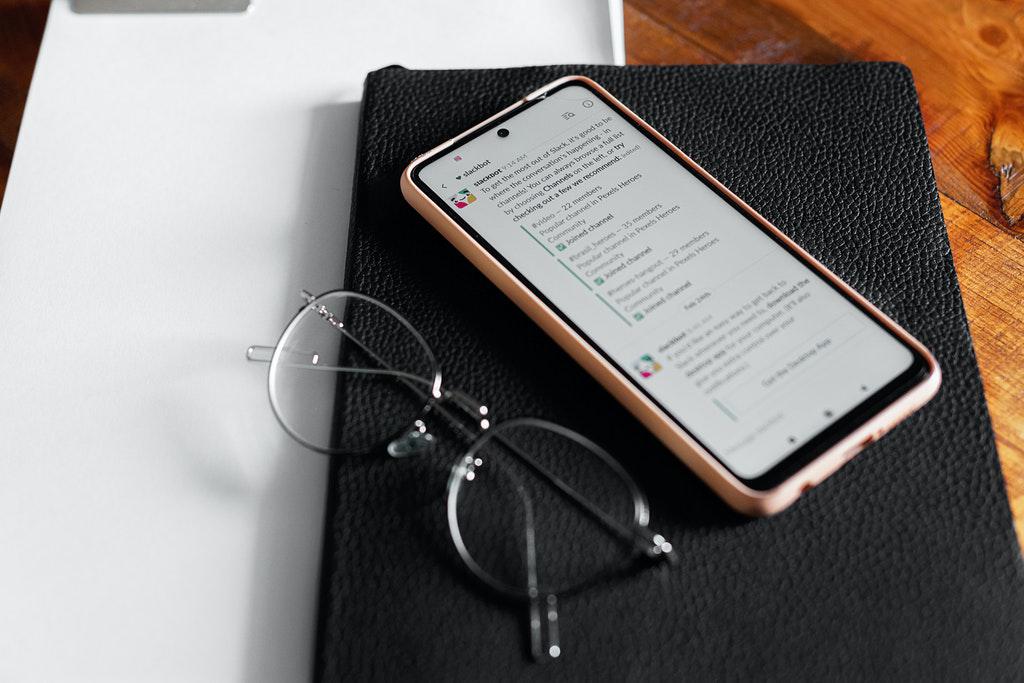Customer conflict is unavoidable. For many reasons, conflicts with customers will happen. And they may happen quite frequently. So you need to learn how to manage them.
In this article, we’ll talk about conflict management with customers—what it is, which tactics you can use, and how to get better at it.
What Is Conflict Management? (And Why Should You Care in Customer Service?)
Essentially, conflict management refers to the way you handle a dispute between different people. Proper conflict management aims at handling the dispute as quickly and effectively as possible by getting all parties to a place where they feel comfortable.
Knowing how to manage conflict is a vital part of any customer service training—because it’s not just frequent, but also time-consuming. According to a poll conducted by the CPP in 2008, retail employees in the United States spend approximately 2.8 hours each week involved in conflict management. This estimate translates to approximately 359 billion dollars in man-hours spent in conflict resolution, rather than on productivity.
But conflict management isn’t just costly due to the time spent between customers and employees. In the United States, a company faces almost a 12% chance of being the target of an employment lawsuit. The average cost for defense and settlement is $125,000, and it takes 275 days to get resolved.
As you can see, the lack of proper conflict management can be expensive and time-consuming.
So which conflict management styles are best?
The 5 Conflict Management Styles (backed by Science)
These are the five main conflict management styles…
Collaborating Style
This style is sometimes called a “win-win.” It aims at getting both parties satisfied with the result.
To achieve this goal, all parties must be actively working towards a solution through an open discussion that involves them laying out their issues and goals. By laying their cards on the table, all parties can work together to find a solution that fits best for everyone, not just one person.
In the acclaimed book The 7 Habits of Highly Effective People, Stephen Covey defines this style as “agreements or solutions [that] are mutually beneficial, mutually satisfying. With a Win/Win solution, all parties feel good about the decision and feel committed to the action plan. Win/Win sees life as a cooperative, not a competitive arena.” (page 207)
This style requires all parties to be completely honest and willing to find a solution. To resolve the problem, they must think outside the box.
Best for:
Any environment where all parties are willing to collaborate to achieve a goal.
Pros:
- Everybody wins.
- Increases bonding through resolution
- Can achieve creative solutions to complex problems
Cons:
- Requires all parties to be willing to collaborate
- May be quite time-consuming
- May not get to a resolution, despite all efforts.
Competing Style
On the opposite side of the collaborating style, a competing style aims at completely ignoring all issues and goals of the other parties. Then one party wins, and the rest lose.
This style not only focuses on winning at all costs, but also on actively making the other lose—without giving any concessions or middle ground.
To properly use this style, one can pull rank, gaslight the opposite party, or argue until the other party gives up.
This competing style is mostly seen in political races, where both parties are fully dedicated—not only to winning, but also to making the other party lose by running negative ads and bending the truth. Any concession is seen as a sign of weakness.
Best for:
Quick resolutions where any authority can be leveraged.
Pros:
Can achieve a resolution very quickly (if done properly)
Ensures your party wins at all costs
Cons:
Invites conflict
Can be extremely unproductive when both parties are using it
Damages relationships
Avoiding Style
The avoiding conflict management style essentially involves the lack of acknowledgment that the conflict exists.
By avoiding confrontation or trying to resolve it at all costs, either no r party wins, or your party loses.
Ironically, this style can be quite beneficial in some cases. If the issue is small, ignoring it may be the best course of action. And if there isn’t a clear resolution to the problem (or if the problem will go away by itself), you may also ignore it. For example, one of these scenarios may exist when you encounter a problem in your workplace right before quitting.
However, this style is never good when there’s a pressing need to reach a resolution.
Best for:
Any conflict where doing something will achieve the same as doing nothing.
Pros:
- By definition, it takes no time.
- Allows for the diplomatic withdrawal of a conflict
Cons:
- Does not resolve anything
- Should not be applied to large or unavoidable problems
- May let you out of the conflict resolution process
Accommodating Style
The accommodating style involves being willing to do anything to make the other party satisfied. Whatever they ask for, you’ll give it to them if it will resolve the conflict. This style is obviously the preferred one for the opponent, especially if they’re using a competing style.
This style may be useful in matters of low importance, where any solution is good. Examples include where to eat or what movie to watch when you don’t really care about the answer.
It’s also a great way of solving a conflict when the relationship is too important to risk losing it. However, the overuse of this style can quickly overwhelm you, since your opinion will most likely not be heard.
Best for:
Any situation where any solution is better than no solution, or when you know you’ll lose the conflict anyway.
Pros:
- Preserves the relationship very well
- Quick and easy to implement
Cons:
- Only takes into account the needs of the other party
- May set a bad precedent
- Lends itself to being abused by the opposite party
Compromising Style
Lastly, the compromising style involves neither party getting what they want, but all parties being willing to cooperate, in order to get the next best thing for all involved. It’s similar to the collaborative style, but it involves more equal sacrifices from all parties.
This style is used when negotiating a price in a flea market or a salary in a job interview. Through mutual collaboration, both parties may achieve a result that wasn’t anyone’s first choice, but that ends up working for everyone.
Best for:
Conflict resolution among equally powerful parties aims at different or incompatible solutions.
Pros:
- Aims at a middle-ground that works for all parties
- Can help people bond and learn how to work together
Cons:
- May leave all parties equally dissatisfied
- May involve a lot of time in negotiations
3 Popular Conflict Management Examples
Here are three common conflict management scenarios and ways to deal with them…
1. Conflicts with an angry customer

Unfortunately, rude and angry customers aren’t hard to come by. Since most companies focus on exceptional customer service, employees may find it hard to deal with angry customers while complying with customer service rules.
However, it’s important to deal with angry customers as quickly as possible. It takes time away from dealing with other customers. And the longer a resolution takes, the angrier the customer may get.
How to deal with them:
Usually, the two techniques that work best with angry customers are accommodating and compromising styles.
Through the accommodating style, you can simply listen to the customer’s complaint and solve the situation as quickly as possible—by giving the customer everything they want. This solution not only saves time, but can even save the customer. Often, even bending the rules a little bit for a customer will be more profitable than losing their business, wasting time, and getting a bad review.
This solution can include things like giving a refund without a receipt or accepting an expired coupon.
But if the angry customer is asking for something completely out of your reach, you’ll have to compromise. After acknowledging their complaint, you can tell them their request isn’t possible to fulfill. Then you can focus on what you can do for them instead.
For example, an employee working for a hotel may encounter an angry guest who demands to be moved to the most expensive suite, due to a small inconvenience. After checking the hotel’s booking system, the employee can tell them those suites are currently unavailable. But to compensate for their inconvenience, they can either receive a free breakfast or massage. And the rep can focus on how great both options are.
This solution forces the angry customer to focus on choosing. And it will often reduce their anger, since the employee is focusing on solving their issue.
But if the customer becomes violent or dangerous, the employee will have to shift to a competing style by refusing to give the customer anything. And they will have to get a security guard to escort them out of the building.
2. Conflicts with a calm customer

Sometimes, a customer may approach an issue in a calm manner. They know their issue isn’t the employee’s fault, and they’re in the best position to solve it. With these kinds of customers, you have a few options.
How to deal with them:
Since these customers are willing to work with you, you can use the collaborating style. With the help of the customer, you can both work together to find out how to solve their needs in a way that’s also allowed by the company.
For example, a customer may come in looking to exchange a purchase they aren’t satisfied with. In this scenario, you can process the exchange while asking what the customer wanted and how the product didn’t deliver. With this information, you can guide the client through the different options, and you may even be able to highlight the benefits of an up-sale. That way, the customer ends up with a product they like, and the company ends up with a slightly higher revenue.
You can also use these opportunities to increase customer loyalty through the accommodating style. By giving a calm customer everything they want in order to solve their issue, they’ll quickly become loyal customers and brand ambassadors.
3. Conflicts with a customer who’s wrong

Contrary to popular belief, the customer isn’t always right. Sometimes, the customer wants something they can’t have, or expects to receive something other than the item they purchased (even if there is a clear product description).
These issues are very common with technology. The customer may claim their product isn’t working when it is, or expects features the product simply doesn’t offer.
How to deal with them:
In these cases, you can use a friendly version of the competing style. In this style, you put all your efforts into not giving the customer what they want (like a full refund, an exchange, or a free service) by educating them and convincing them that what they have is exactly what they need.
If the issue will go away by itself, you can also use the avoiding style. For example, a customer may call their internet provider to say their router is broken and demand a refund or full troubleshooting service. However, the employee can see that the issue is a simple glitch that should last less long than the quickest troubleshooting service.
In this case, the employee can ask them to wait for a few minutes and call back if they keep experiencing issues. They can even check to see if their issue is already solved before they start. Through simple avoidance, the issue can be resolved, and the customer will end up satisfied.
How to Choose the Ideal Conflict Management Strategy
Don’t know which style to use? Here are a few questions to help you choose…
How important is your relationship to the other party?
When managing a conflict, this question is probably the most important one you can ask yourself. The truth is that some relations are just not worth the hassle of collaborating.
As we’ve said before, you may not even want to solve an issue at your workplace if you’re planning on resigning anyway. You may also have multiple options, so solving an issue to maintain a relationship with a certain provider (such as renegotiating a contract) may be more complicated and time-consuming than simply going with another provider. In this case, you can simply use the avoiding or competing styles, since you’re ready to walk anyway.
However, if you have an important relationship (such as one with a big customer), you’ll probably be happy to use the accommodating style. You’ll even bend the rules to make sure the customer doesn’t look for a different option.
How much time do you have?
Some solutions take longer than others. And sometimes, the time spent negotiating may not be worth the resolution.
This solution will likely depend on your customer service philosophy. Some businesses are built in a high-paced environment, where any time spent negotiating with potential customers is time you could spend gaining customers. In this case, you may want to use a collaborating style.
Other businesses are built in establishing a few long-lasting relationships with their customers. So a compromising (or even an accommodating) style would end up being a better option, even at the cost of longer negotiations.
What are the circumstances?
Finally, even if you don’t have the time (don’t need the relationship), you’ll need to consider the circumstances of each potential conflict management style in each interaction.
For example, your company may be focusing on reducing customer churn that month. So spending the time to keep a low-paying customer may end up being worth it.
Use these questions and think about the potential outcome of using each conflict management style, in order to figure out what’s best for you.
How to Improve Your Conflict Management Skills
Grow and improve your conflict management skills with these simple tips…
1. Listen
The first step to solving an issue is knowing what the issue is. So you need to practice your listening skills.
Often, people don’t say what they mean to say. A customer may be angry—not because of their expired coupon, but because of their inability to find a cheaper option. They may say they want to return the item. But what they really mean is that they couldn’t figure out how to access a feature on their item.
To practice, listen to your clients without any interruption. Then ask probing questions to ensure you know exactly what their pain points are. Look at their body language and find out what the issue is and how it makes them feel.
If you listen to your customer, they’ll most likely listen to you.
2. Remain calm
Remaining calm can be challenging, especially when you’re facing an irate customer. However, it’s vital if you want to solve the conflict. It’ll help you control the situation and stay on top of it, in order to solve it as quickly as possible.
So remember that anything the client says is rarely personal. They’re not angry at you. They’re angry at the company you happen to work at.
Focus on your tone and emotions, and keep them in check. And if you need to, take a breather after dealing with an angry customer, in order to collect yourself and prepare for the next interaction.
3. Be positive
It’s hard to stay mad at a person that just wants to fix things. In fact, remaining positive will both help an angry client calm down and help a client work with you to find a solution. This tactic can also help you clear up miscommunications without accepting blame or worsening the situation.
To achieve this goal, empathize with the customer. Put yourself in their shoes and acknowledge how the issue affects them. Let them know you’ll do everything in your power to take care of them, and reassure them with a smile.
If you can maintain a positive attitude during conflict resolution, you’re already halfway toward solving it.
Conclusion
Conflict is inevitable. So you need to know how to handle it. Through the main five conflict management styles, you’ll be able to easily find the right solution to the right problem, and maintain a cool head while solving it!






 Instagram
Instagram